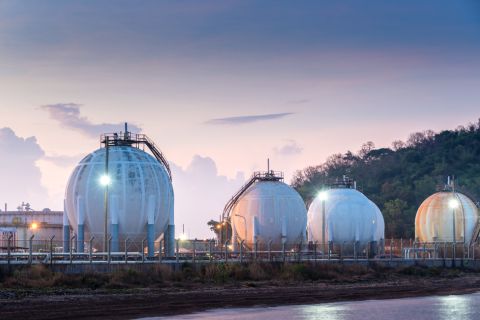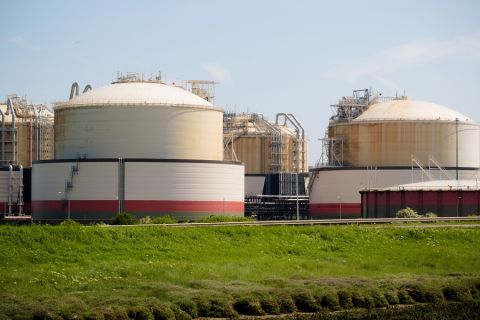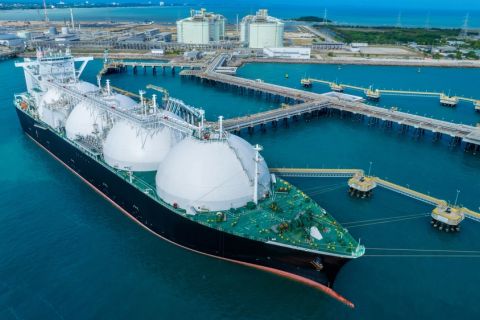Exxon Mobil Corp. on March 3 pitched investors plans to grow its dividend and curb spending after ambitious growth plans and the COVID-19 pandemic led the top U.S. oil and gas producer to a historic annual loss last year.
Investor pressure has mounted for Exxon to cut costs, improve financial returns and better prepare for the energy transition to lower-carbon fuels.
Ahead of its investor day presentation, the company reaffirmed plans to keep project spending between $16 billion and $19 billion in 2021, and between $20 billion and $25 billion per year through 2025.
It expects output to remain flat at around 3.7 million barrels of oil and gas per day through mid-decade as it focuses on boosting cash flow instead.
Prior to the pandemic, and to the dismay of many investors, CEO Darren Woods promised to “lean in” on spending as much as $35 billion per year on projects. The company made costly misfires in recent years by overspending on shale and oil sands projects that it later wrote down.
But after the pandemic slashed energy demand, Exxon cut spending by nearly a third—reducing the value of its shale gas properties by more than $20 billion—trimmed workers and added debt to cover spending.
Shares were up a fraction in premarket trading to $56.55 and have risen by more than a third so far this year.
The company is trying to pitch a skeptical Wall Street that it has embraced cost cutting, with much of its investor pitch focused on cost reductions, cash flow and earnings projections that are not as bold as in previous years.
Exxon has drawn the ire of activist investors focused on climate, but since December the company has said it would reduce the intensity of its oilfield greenhouse gas emissions by 15%-20% from 2016 levels.
It has not set an overall emissions target, however, and reducing intensity means that emissions still could rise if oil and gas output grows.
The company also announced plans to commercialize technology that helps cut carbon emissions and disclosed its Scope 3 emissions, a large category of greenhouse gases emitted from fuels and products it sells to customers such as jet fuel and gasoline.
Exxon plans to spend $3 billion through 2025 on its low-carbon business, or about 3% of its capital spending, up from about 1% previously. “But it is still far from the double-digit levels of companies such as Shell and Total,” said Pavel Molchanov, analyst with Raymond James.
On March 1, Exxon named activist investor Jeffrey Ubben and former Comcast executive Michael Angelakis to its board amid pressure by prominent shareholders.
The company has also announced a 7% reduction in its Singapore workforce and detailed a plan to achieve $6 billion in annual savings by the end of 2023.
Recommended Reading
Gunvor Group Inks Purchase Agreement with Texas LNG Brownsville
2024-03-19 - The agreement with Texas LNG Brownsville calls for a 20-year free on-board sale and purchase agreement of 0.5 million tonnes per annum of LNG for a Gunvor Group subsidiary.
US Expected to Supply 30% of LNG Demand by 2030
2024-02-23 - Shell expects the U.S. to meet around 30% of total global LNG demand by 2030, although reliance on four key basins could create midstream constraints, the energy giant revealed in its “Shell LNG Outlook 2024.”
Venture Global, Grain LNG Ink Deal to Provide LNG to UK
2024-02-05 - Under the agreement, Venture Global will have the ability to access 3 million tonnes per annum of LNG storage and regasification capacity at the Isle of Grain LNG terminal.
Asia Spot LNG at 3-month Peak on Steady Demand, Supply Disruption
2024-04-12 - Heating demand in Europe and production disruption at the Freeport LNG terminal in the U.S. pushed up prices, said Samuel Good, head of LNG pricing at commodity pricing agency Argus.
CERAWeek: JERA CEO Touts Importance of US LNG Supply
2024-03-22 - JERA Co. Global CEO Yukio Kani said during CERAWeek by S&P Global that it was important to have a portfolio of diversified LNG supply sources, especially from the U.S.




